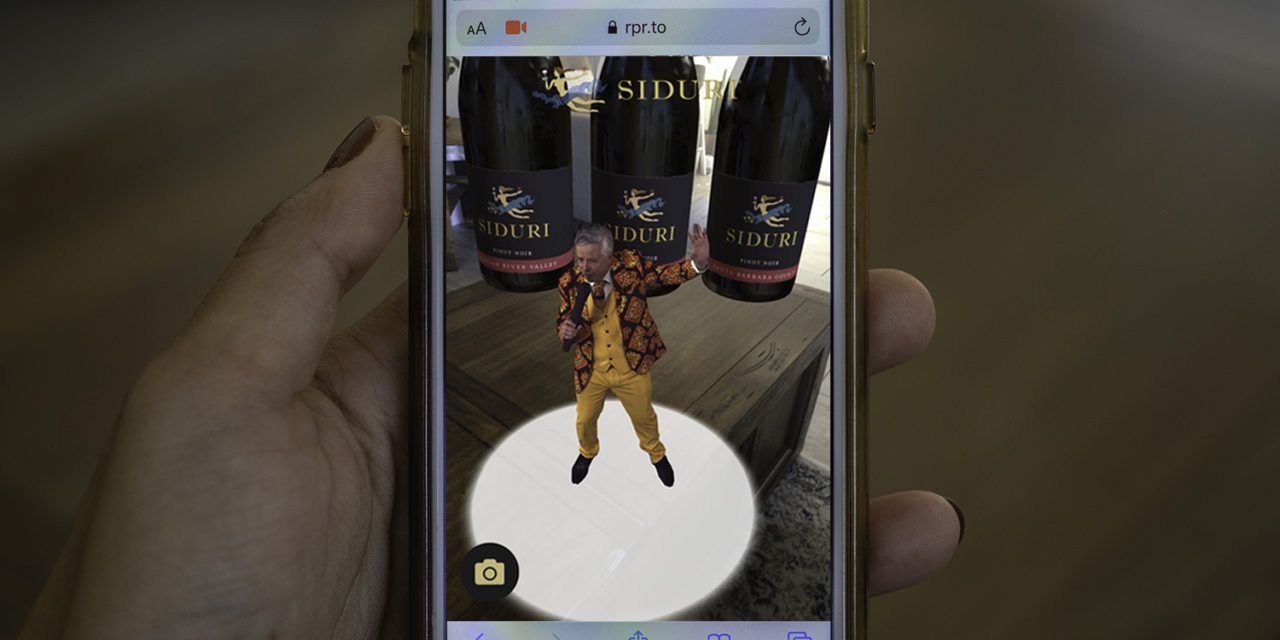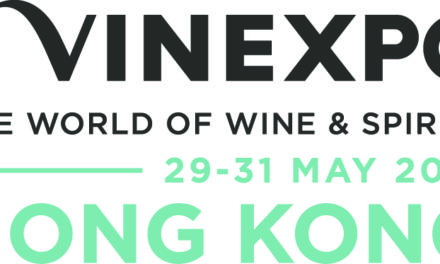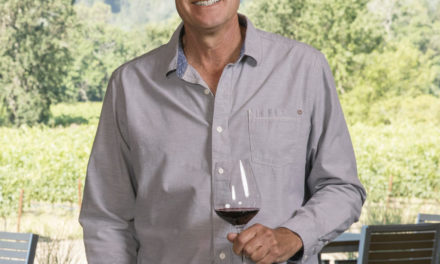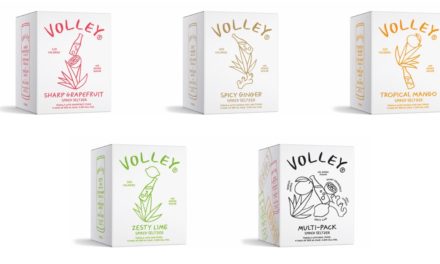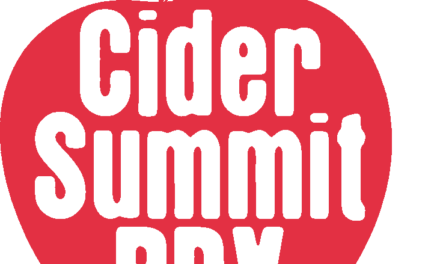The COVID-19 pandemic has had a profound effect on wineries around the world, leading to closed-down tasting rooms, canceled orders, and diminished customer connections. Most would agree that 2020 will go on record as the most challenging year in decades. Yet, even in the toughest of times, wineries are finding creative ways to survive and thrive.

Sfriso’s prosecco as imagined by artist Zahid Anwar; bottle shot by Outshinery [image courtesy Sfriso]
Instead of taking a loss, Haros leveraged her digital networks to launch The 6000 Project, a label competition that invited creatives around the world to design the limited-edition label for the naked bottles. Through digital media coverage and social media posts, the project gained international attention and garnered 74 label submissions.
Haros posted the designs on a dedicated website (www.the6000project.com) and encouraged the public to vote for their favorites. The website also offered pre-sales of the soon-to-be-labeled wines, and sold more than 1,000 bottles in 6-packs in less than three months.
“Our minimum target was to sell 900 bottles [150 cases]. If we didn’t reach that target, the project would have been canceled, just like in crowdfunding,” says Haros. “The 6000 Project was funded by reaching 114 percent of the goal.
“Eighty-five percent of the orders were placed by people who aren’t current customers of Sfriso Winery,” says Haros. “Some had never heard of us before The 6000 Project, and others are people who follow us on social media but had never tried our wines.”
Haros says she would definitely recommend a similar approach for other wineries looking to increase direct-to-consumer sales during the pandemic—or, she adds, in any crisis situation, when a quick tactical reaction is needed to prevent further revenue loss. “The format is scalable,” she says, “and it requires limited investment.”
Thinking Small
When tasting rooms shut down across the United States due to stay-at-home orders, dozens of wineries began offering virtual tastings. To make home tasting kits more affordable and attract new customers, a handful of producers introduced a clever twist that takes advantage of an Alcohol and Tobacco Tax and Trade Bureau (TTB) regulation letting wineries ship samples in mini bottles (see sidebar, below).
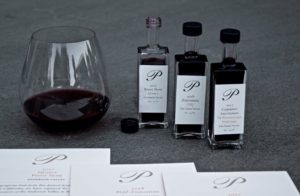 The transition was an easy one for Passalacqua Winery in California’s Dry Creek Valley, because it already had experience with small-bottle samplers. A few years back, the winery began offering new releases in 2-ounce test tubes, combined with phone or video-chat tastings. As it turned out, the idea was ahead of its time.
The transition was an easy one for Passalacqua Winery in California’s Dry Creek Valley, because it already had experience with small-bottle samplers. A few years back, the winery began offering new releases in 2-ounce test tubes, combined with phone or video-chat tastings. As it turned out, the idea was ahead of its time.
“Truthfully, it was hit and miss,” recalls winery owner Jason Passalacqua, who eventually put the program on the back burner due to lackluster demand. “Wine is a bit traditional, so some people were skeptical and wanted to know if the wine would taste the same as in a 750mL bottle. Fast forward to COVID-19 and virtual tastings, and now we have trouble keeping up with the demand.”
Due to supply issues, the winery has since traded test tubes for 2-ounce bottles, offering three samples and a curated virtual tasting for $75.
“We send everything by two- or three-day air, so when people ask about the price, I explain that at least $45 of that goes to UPS,” Passalacqua says. “We’re not taking any risks in the quality of the wine, because the last thing we want to do is get on the call with our clients and have the wine be cooked.”
After multiple trials, the winery team determined that the smaller packaging allows for about a two-week shelf life for whites and up to 20 days for reds, so customers are advised to schedule tasting appointments within those time frames.
While consumers also purchase the kits, they’ve become especially popular with corporate clients looking for ways to maintain social activities in their now-virtual workplaces.
“I’ve found it fascinating that we have Fortune 500 companies struggling to maintain corporate culture during the pandemic, and they’re looking to small business America to bridge that gap,” says Passalacqua. “They’re trying to figure out how to give their employees some corporate pride and connection.”
Once the pandemic is over, he predicts, corporate demand will continue as consumer interest tapers off. “Before, I think we were very quick to jump on planes and get together for company dinners,” says Passalacqua, “but the virus is forcing a cultural shift in how we interact.”
Courting Customers
Mini-bottle samplers can also help wineries attract new customers at a time when tasting room traffic has slowed to a trickle. In response to pandemic shutdowns, Avennia in Woodinville, Wash., began offering themed virtual tasting kits, each including five 5-ounce bottles of wine. Priced around $50 for pickup at the winery or local delivery, the sample packs let customers taste a variety of wines for the price of a single bottle.

“Once tasting rooms come back full steam, I think the tasting kits will probably get phased out.” —Marty Taucher, Avennia
“A large part of the way you build a customer base is by people coming in, trying the wines, and falling in love with your story,” says owner Marty Taucher. “We had no way of letting our customers experience the wine, and without the option of doing that in the tasting room, we decided to try bringing the tasting room experience to them.”
That’s not to say the petite packaging didn’t present challenges. “In the beginning, we had issues with bottles leaking pretty consistently until we learned not to over-tighten the seals,” says tasting room operations manager Andrew Bradshaw. “Because we fill them by hand, there’s lots of room for error, with wine dripping down the sides of the bottles.”
While demand for the samplers continues, Taucher views them as a temporary fix. “I still think the tasting room experience is what people really want,” he says. “It’s so much easier for us to tell our story and talk about the wines we make. Once tasting rooms come back full steam, I think the tasting kits will probably get phased out. They’re a lot of work.”
For Lori Budd, owner of Dracaena Wines in Paso Robles, Calif., mini bottles are worth the extra effort. When lockdowns happened, she began packaging wines in 4-ounce jars, offering three samples for $35 including shipping, along with a video tasting session.
“I buy the bottles on Amazon; they’re actually specimen jars,” she says. “We top them off with argon gas to provide an oxygen barrier, then wrap the seals with electrical tape and pack them for shipping in bubble wrap.”
To get the word out about the tasting kits, Budd posts frequently on Instagram and takes advantage of her well-trafficked Exploring the Wine Glass podcast and blog platforms. She also reaches out to local businesses for cross-promotion opportunities and connects with her college alumni association to host virtual tastings. Because her wine labels feature a Weimaraner dog, Budd befriends breed-loving groups on social media and tells them about the tastings.
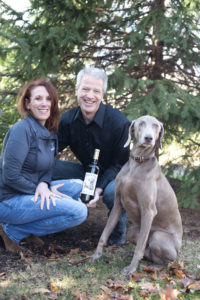
“It’s a nice introduction to the winery and not everyone can make it out to Paso Robles.” —Lori Budd, Dracaena Wines
“These aren’t necessarily wine people, so they’re not willing to spend big money on a bottle of wine they’ve never tried—plus shipping,” she says. “With the 4-ounce jars, they can taste the wines for a lot less money.”
Once people taste the wines, many follow up with orders, schedule additional tastings, or join Dracaena’s wine club.
When the pandemic crisis is over, Budd plans to keep the sampler program going. “It’s a nice introduction to the winery and not everyone can make it out to Paso Robles,” she says. “In terms of our outlay it’s relatively cheap to set up. The jars aren’t very expensive and we buy everything in bulk.”
New Life for QR Codes
West Coast pinot noir specialist Siduri Wines, owned by Jackson Family Wines, has also been creative with its packaging. In July 2020, the winery launched the Siduri Holographic Experience, created in collaboration with Microsoft’s Mixed Reality Capture Studios and augmented reality (AR) design agency Rock Paper Reality.
To create the AR experiences, the Microsoft team filmed Siduri founder Adam Lee’s performance using a 106-camera system, resulting in a realistic, three-dimensional hologram. When combined with 3D content and animations, Lee becomes fused into the digital environment, taking consumers on three different virtual adventures. By scanning a QR code, a smartphone camera unlocks the AR experiences with no application downloads required. While they’re currently accessed in retail settings via QR codes or hyperlinks on shelf talkers and other signage, QR codes will be printed on select Siduri wine labels in the coming months.
The Siduri Holographic Experience draws on the personality and playfulness inherent to Siduri and founder Adam Lee – that serious wine and serious fun aren’t mutually exclusive – to bring consumers in and engage them with the world of wine in a way that’s both educational and entertaining.

“The Siduri Holographic Experience is a new way for us to engage with consumers.” —Adam Lee, Siduri Wines
Conceived in 2019 and filmed in February 2020, the concept wasn’t created in response to the pandemic situation. Even so, its timing turned out to be fortuitous; not only are consumers hungry for virtual experiences, they’ve become accustomed to using QR codes on touchless restaurant menus.
“I put QR codes on Siduri bottles a long time ago, but people really weren’t using them much,” says Lee. “You had to download a certain app and there were competing apps, and you didn’t know which one was going to work. Now there is greater awareness around QR codes and we’ve removed the necessity of an app, so consumers can easily use their camera phone to scan the code and launch the experiences seamlessly.”
With many restaurants closed across the country due to shutdowns, Lee compares the Siduri AR experience to having a mini sommelier—in this case, himself—pop up at the consumer’s table to tell a story about the wines.
“In the last six months, direct-to-consumer has taken on an added necessity. I’ve been doing a lot of Zoom tastings, which are great and seemed brand new when we started, but now we’re all trying to figure out how to engage people in different ways,” he says. “The Siduri Holographic Experience is a new way for us to engage with consumers—through an on-demand experience, enabling consumers to learn about the wines anywhere, anytime.” (See “Zoom-tastic”)
Post-COVID, Lee predicts an exciting future for AR experiences in the wine realm. “I’ll bet this is only the tip of the iceberg,” he says. “The technology is going to improve, and we’re going to find ways to make these experiences more engaging and go more in-depth.”
SIDEBAR
Mini-Bottle Shipments Allowed for Virtual Winery Experiences
At the request of San Francisco-based Wine Institute, the Alcohol and Tobacco Tax and Trade Bureau (TTB) and California Alcohol Beverage Control (ABC) recently provided guidance to wineries about shipping wine in small containers for virtual tastings.
TTB and California ABC confirmed the practice is permitted under existing regulations, subject to meeting specific federal and state requirements. For out-of-state shipments, tasting samples are reportable DTC shipments applied to a customer’s quantity limitations, subject to taxes and all other requirements of DTC shipments in each state.
Distribution of wine for tasting samples will be treated as a normal taxable removal from the winery premises, subject to all applicable conditions of the Federal Alcohol Administration Act (FAA Act), the Alcoholic Beverage Labeling Act (ABLA), and the Internal Revenue Code (IRC). Wineries meeting these conditions do not need any waivers from current requirements.
For more details, see https://wineinstitute.org/our-work/compliance/tasting-samples-requirements-for-virtual-winery-experiences/

